Fairfax’s Crispin Hull penned a great piece over the weekend explaining why Australia’s near record run of uninterrupted economic growth is largely a mirage:
On Friday, Australia equalled the Netherlands’ record of 103 consecutive quarters of economic growth, as measured by gross domestic product, without a recession. So why aren’t the champagne corks popping?
The Netherlands’ boom came with gas in 1982 and ended with the Global Financial Crisis in 2008.
Australia’s boom began in 1991 after “the recession we had to have”…
So why are so many people feeling anxious and worse off?…
Of course, quite a few people in Australia (those on higher incomes and with wealth) are enjoying the long period without a recession, but not the majority.
We are not having it so good because, even if you accept GDP as a measure of “good” life, the figure itself is a mirage. It has up to half a dozen major flaws.
Hull goes on to explain the flaws inherent in GDP as a measure of welfare, namely:
- It does not account for population growth;
- It does not account for worsening inequality;
- It does not account for Australia’s ballooning household debt;
- It does not account for environmental destruction or the repair bill from natural disaters;
- It does not account for financialisation – i.e. the growing share of non-productive financial flows across the economy;
- In Australia’s case, it does not capture the falling real national income and wages since 2012.
Hull’s first point about population growth is particularly apt:
In the Netherlands’ boom of 1982 to 2008, its population increased by just 13 per cent. In the Australian boom from 1991 to 2017, on the other hand, the population rose an astonishing 42 per cent. So we may have had an ever-increasing size of the cake, but there were so many more mouths to feed it to that often many people were not getting any more cake than they had in the past.
Indeed, when you adjust for that factor alone, Australia has not had 103 quarters without a recession. On a per head basis, Australia had recessions (two or more consecutive quarters of GDP contraction per head) in 2000, 2006 and 2008.
In those years people, on average, went backwards.
Indeed, Australia is a high population growth (immigration) nation, whereas the Netherlands is not:
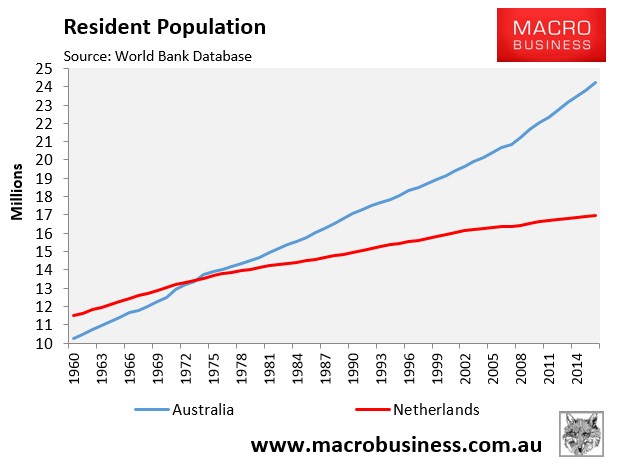
Since 1960, Australia’s population has grown by a whopping 136% versus the Netherlands’ 48%:
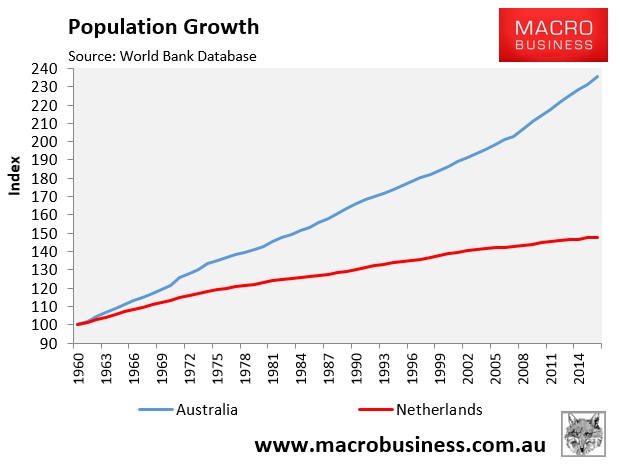
And over their respective ‘boom’ phases, Australia’s population growth has been far higher than the Netherlands – i.e. circa 40% versus just 15%:
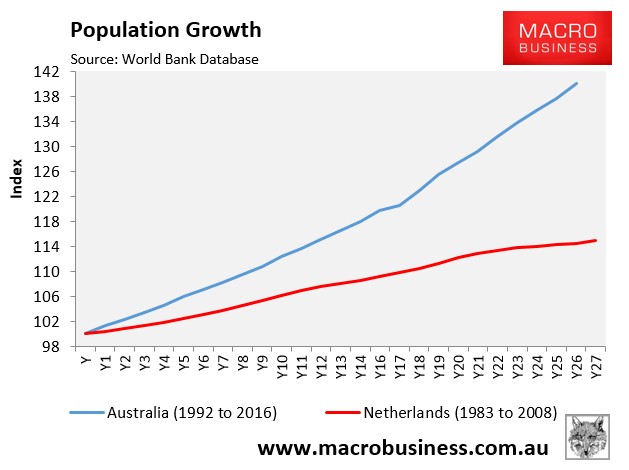
Now let’s turn to growth in GDP per capita. The Netherlands’ has comprehensively beaten Australia’s since 1960:
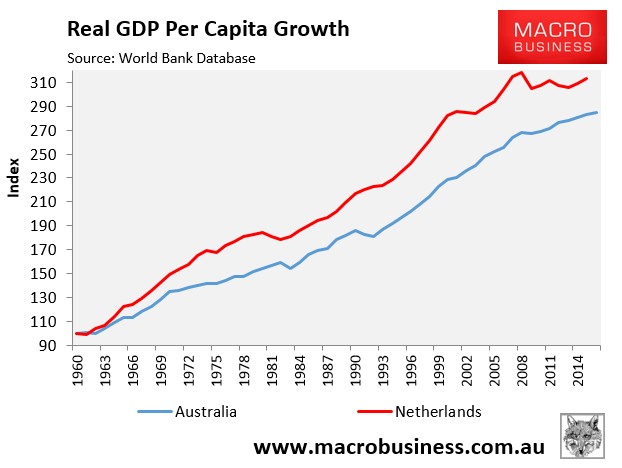
As well as during their respective uninterrupted ‘booms’:
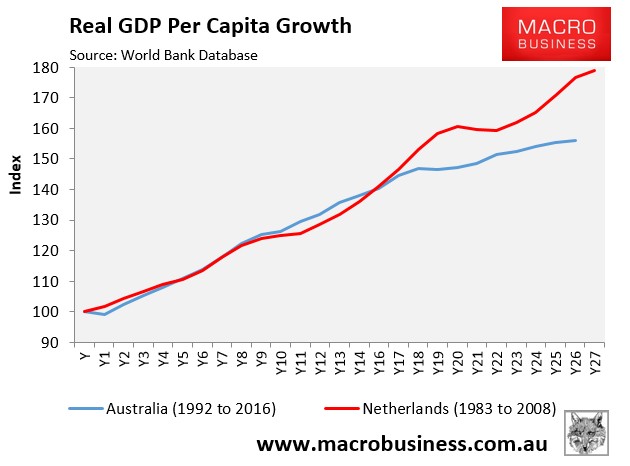
It is also worth reiterating that Australia’s uninterrupted ‘boom’ has also been caused, in part, by an unprecedented build-up in household debt, which is now the second biggest in the world when measured against GDP, and is also higher than the Netherlands:
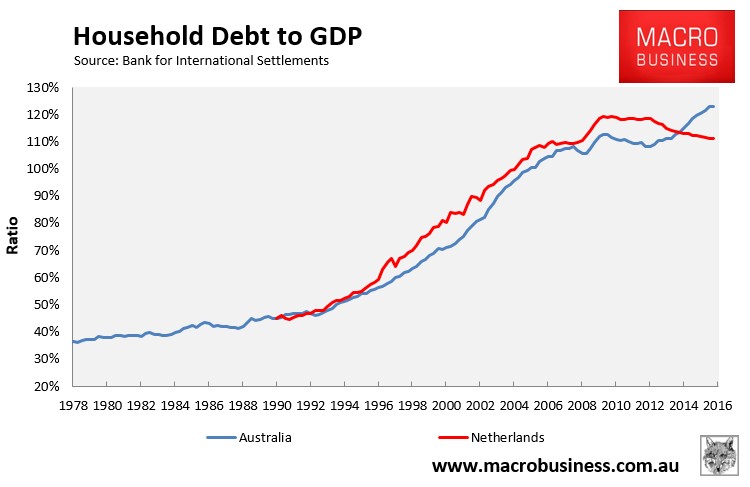
Clearly, much of Australia’s ‘growth’ success has been largely a mirage, brought about by running one of the world’s biggest mass immigration programs as well as the unprecedented build-up of household debt.

